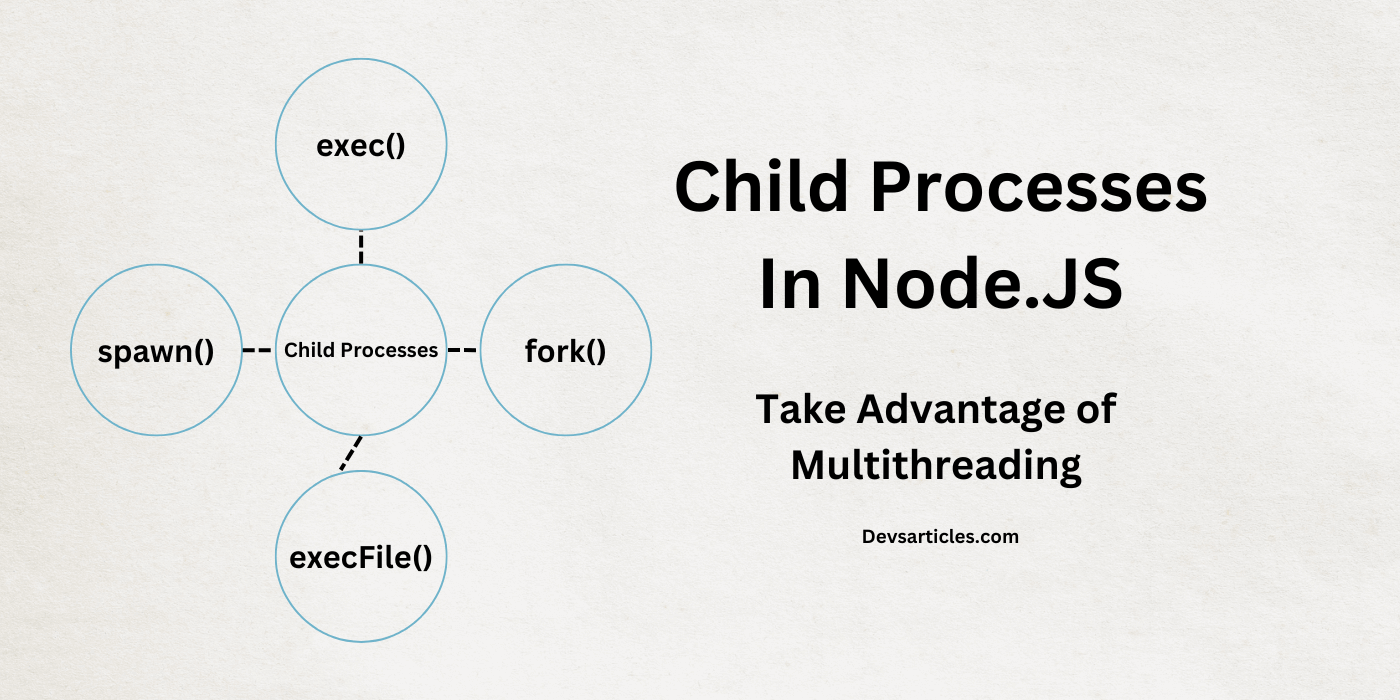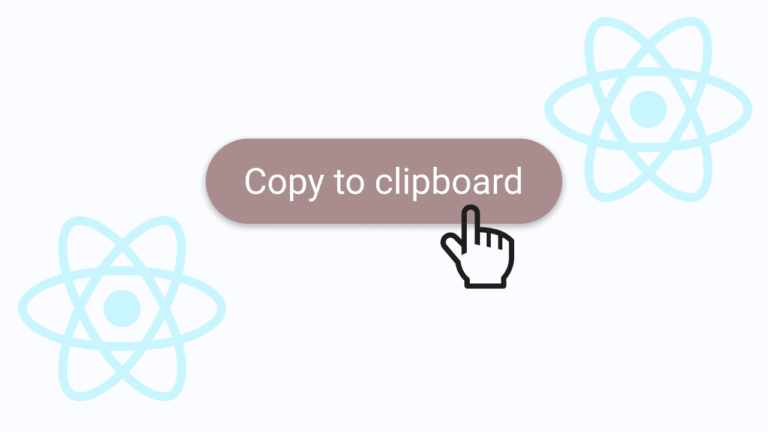Unleashing the Power of Child Processes in Node.js: A Comprehensive Guide

Introduction
Node.js has gained immense popularity for its ability to handle asynchronous operations efficiently. However, its single-threaded nature can become a bottleneck when dealing with CPU-intensive tasks, as the main process is designed to handle only one thread at a time. This is where Child Processes come into play, offering a robust solution to leverage multithreading in Node.js systems and handle resource-intensive operations without blocking the main event loop, effectively managing both processes and threads.
Table of Contents
Understanding Child Processes
Child Processes in Node.js are separate instances of the V8 engine, each running in its own memory space. They allow you to execute external commands, run scripts in different languages, or spawn additional Node.js processes. This capability enables parallel processing and better utilization of system resources.
Core Methods for Creating Child Processes
Node.js provides four primary methods for creating child processes, each suited for different scenarios:
1. spawn() in Node.js
The spawn() method launches a new process with a given command. It’s ideal for long-running processes or when you need to handle large amounts of data.
const { spawn } = require('child_process');
const ls = spawn('ls', ['-lh', '/usr']);
ls.stdout.on('data', (data) => {
console.log(`stdout: ${data}`);
});
ls.stderr.on('data', (data) => {
console.error(`stderr: ${data}`);
});
ls.on('close', (code) => {
console.log(`child process exited with code ${code}`);
});In this example, spawn() executes the ‘ls’ command, listing the contents of the ‘/usr’ directory. The output is streamed back to the parent process in real-time.
2. exec() in Node.js
The exec() method spawns a shell and runs a command within that shell. It’s useful for executing simple shell commands and capturing their output.
const { exec } = require('child_process');
exec('node -v', (error, stdout, stderr) => {
if (error) {
console.error(`exec error: ${error}`);
return;
}
console.log(`Node.js version: ${stdout}`);
});Here, exec() runs the ‘node -v’ command to get the Node.js version. The output is captured and returned in the callback.
3. execFile() in Node.js
Similar to exec(), execFile() executes a file directly without spawning a shell. This method is more efficient when you don’t need shell features.
const { execFile } = require('child_process');
execFile('node', ['--version'], (error, stdout, stderr) => {
if (error) {
console.error(`execFile error: ${error}`);
return;
}
console.log(`Node.js version: ${stdout}`);
});This example achieves the same result as the previous one but does so without spawning a shell, potentially offering better performance.
4. fork() in Node.js
The fork() method is a special case of spawn() specifically designed for creating new Node.js processes. It provides a built-in communication channel between the parent and child processes.
const { fork } = require('child_process');
const child = fork('child-script.js');
child.on('message', (message) => {
console.log('Message from child:', message);
});
child.send({ hello: 'world' });In this example, fork() creates a new Node.js process running ‘child-script.js‘. The parent and child can communicate using the send() method and the ‘message’ event.
Inter-Process Communication (IPC)
One of the key features of child processes is the ability to communicate between the parent and child. This is achieved through Inter-Process Communication (IPC) channels.
Sending Messages
Both the parent and child can send messages using the send() method:
// In parent process
child.send({ type: 'greeting', text: 'Hello from parent' });
// In child process
process.send({ type: 'response', text: 'Hello from child' });Receiving Messages
Messages are received by listening to the ‘message‘ event:
// In parent process
child.on('message', (message) => {
console.log('Received from child:', message);
});
// In child process
process.on('message', (message) => {
console.log('Received from parent:', message);
});This bidirectional communication allows for complex workflows and data sharing between processes.
Error Handling and Process Management
Proper error handling is important when working with child processes. You should always listen for potential errors and handle process exits:
const child = spawn('some_command');
child.on('error', (error) => {
console.error('Failed to start child process:', error);
});
child.on('exit', (code, signal) => {
if (code) console.log(`Child process exited with code ${code}`);
if (signal) console.log(`Child process was killed with signal ${signal}`);
});Additionally, it’s important to manage child processes properly to avoid resource leaks:
const children = [];
// Creating child processes
for (let i = 0; i < 5; i++) {
const child = fork('worker.js');
children.push(child);
}
// Graceful shutdown
process.on('SIGINT', () => {
console.log('Gracefully shutting down...');
children.forEach(child => child.kill());
process.exit(0);
});Use Cases and Best Practices of Child processes
Child processes are particularly useful in scenarios such as:
- CPU-intensive computations (e.g., data processing, image manipulation)
- Executing system commands or scripts in other languages
- Isolating unstable or experimental code
- Implementing worker pools for task distribution
When implementing child processes, consider these best practices:
- Use child processes judiciously, as they come with overhead in terms of memory and CPU usage.
- Implement proper error handling and logging for each child process.
- Be mindful of the data passed between processes, as large data transfers can impact performance.
- Consider using a process manager like PM2 for production deployments.
- Implement graceful shutdown mechanisms to ensure proper cleanup of resources.
Conclusion
Child Processes in Node.js offer a powerful way to overcome the limitations of single-threaded execution, enabling developers to build more efficient and scalable applications. By spawning separate processes, Node.js can leverage multi-core systems, handle CPU-intensive tasks, and execute external commands without blocking the main event loop.
While child processes provide significant benefits, they also introduce complexity and potential resource management challenges. Developers must carefully consider when and how to use child processes, always weighing the benefits against the added complexity and resource usage.
By mastering the use of child processes, including proper implementation of inter-process communication, error handling, and resource management, Node.js developers can create robust, high-performance applications capable of handling a wide range of computational tasks efficiently.
FAQs
What is the main difference between spawn(), exec(), and fork()?
spawn() launches a new process with a given command and is best for long-running processes. exec() spawns a shell and runs a command within it, ideal for simple shell commands. fork() is a special case of spawn() specifically for creating new Node.js processes with a built-in communication channel.
When should I use Child Processes instead of Worker Threads?
Use Child Processes when you need to run system commands, execute scripts in different languages, or when you require complete isolation between processes. Worker Threads are better for CPU-intensive tasks that can benefit from shared memory within the same Node.js instance.
Is there a limit to the number of child processes I can create?
There’s no hard limit in Node.js, but the practical limit depends on your system’s resources. Creating too many processes can lead to performance issues or system instability. It’s often better to use a pool of reusable processes.






